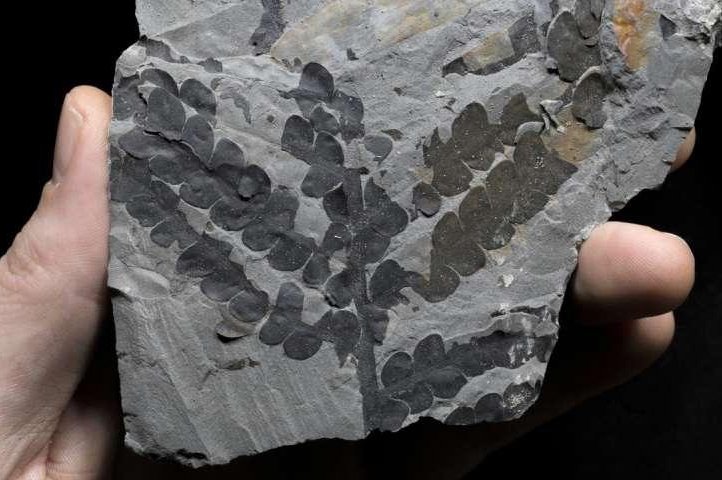Researchers recovered the earliest evidence yet of three plant groups in Permian deposits in Jordan, including the fossilized remains of an ancient seed fern. Photo by Palaeobotany Research Group
Dec. 28 (UPI) -- Paleontologists have recovered the earliest known remains of three plant groups from Permian deposits in Jordan. The excavation revealed a "hidden cradle of plant evolution," according to scientists on the project.
The Permian period began 300 million years ago and lasted 50 million years. Among the Permian sediments, researchers recovered remains of plants from the Podocarpaceae family, Corystospermaceae family and Bennettitales order.
The Podocarpaceae family is the second-biggest conifer family. Today, the family boasts 156 species of evergreen trees and shrubs, spread across the Southern Hemisphere. The Corystospermaceae family, a group of seed ferns, went extinct around 150 million years ago, while the Bennettitales order, an extinct group of seed plants with flower-like reproductive organs, were wiped out some 66 million years ago.
The newly discovered evidence suggests the three groups were older than paleontologists originally thought. Well-preserved twigs and leaves from the three groups allowed scientists to closely analyze the plants' ancient origins.
"Analysis of characteristic epidermal cell patterns enabled us to resolve the systematic relationships of the plant fossils more precisely," Benjamin Bomfleur, researcher at the University of Munster, said in a news release. "The study area is really exceptional, like a melting pot of floral provinces."
Researchers published their findings in the journal Science. Authors of the work are hopeful Jordan's Permian deposits will reveal additional insights into early plant evolution.
"The occurrence of no less than three major 'modern' plant groups in deposits of just this single rock formation may indicate that such stressed and disturbance-prone tropical environments may have acted as evolutionary cradles also for other plant groups," said Bomfleur.















